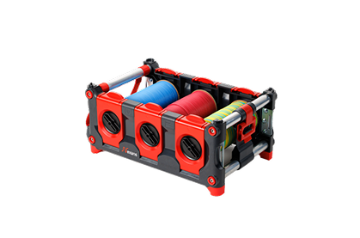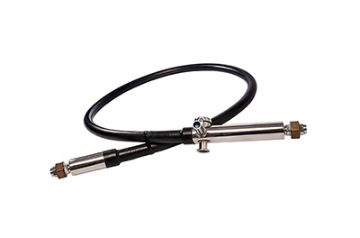- Markets
- Products
- Services
- News
- Tools & Resources
- About Nexans
- Search
- Contact us
- Compare
- Sign in
BlueOn X Nexans: digitalizing environmental data for greater transparency
Joint interview with Thierry Philippot, Digital Sales Manager at Nexans, and Bertrand Touzet, Procurement Manager - Low carbon Strategy at Eiffage

As a supplier committed to the sustainable electrification of buildings, Nexans is the first cable manufacturer to make its products' environmental data fully transparent on the BlueOn platform.
Learn more about this:
1. What are the main technical challenges you encountered in ensuring the collection and sharing of environmental data meets stakeholder expectations?
As the project lead, Nexans was able to contribute to defining the data model (pricing, product data, environmental data) and, at the same time, to understand Eiffage’s expectations in terms of information quality. Environmental data is therefore essential in the PIM (Product Information Management) model.


It’s therefore crucial to fully digitalize all environmental data to ensure proper use downstream. Nexans already had a robust environmental data architecture, as did BlueOn, which saved us time on integration. Once the mapping between our systems was done, we had to consider how to keep this data up to date and ensure its continuity over time. On the BlueOn side, we also had to clarify our approach to displaying environmental data. Since our goal was to simplify and broadly disseminate this information, we had to develop a user-friendly, readable interface without distorting the data provided by Nexans. To guarantee full transparency, we went beyond the typical standards for digitalizing environmental data and worked on the precise qualification of digital PEPs: version of PCR, associated PSR, database and software used, etc. It was a real balancing act that we carried out with our partners. I really like this quote by Paul Valéry: “What is simple is always false. What is not is unusable.”
2. In your opinion, what emerging initiatives could transform the use of environmental data in our industry?
Thierry Philippot – The circular economy is at the heart of the market, especially with new regulations concerning the Digital Product Passport, which aims to promote product reparability, reuse, and recyclability — in other words, the "Second Hand" economy. In this context, information transparency and product traceability will be key components of future transactional flows. To achieve this, manufacturers, partners, and B2B clients will need to ensure that this transparency reaches the end consumer.
Bertrand Touzet – Marketplace technology where environmental data is natively integrated offers many advantages. It allows prices (€) and CO2 values to be displayed side by side while preserving a familiar and user-friendly experience (after all, who doesn’t use e-commerce solutions for personal purchases?). By enriching a widely used technology with environmental data, we accelerate our ability to popularize the concept of LCA (Life Cycle Assessment). Users learn about environmental impact simply by using the marketplace. Also, integrating environmental data into the purchasing moment breaks down silos — until now, this topic was often limited to design offices and other specialists.
3. Do you believe the collaboration between Nexans and Eiffage through BlueOn could become a model for others in the industry? Why?
Thierry Philippot – Absolutely. The growing requirement to reduce the carbon footprint of buildings and electrical infrastructure means products need to be increasingly environmentally responsible. This gives environmental data considerable weight in the procurement process. As a result, every actor in the supply chain must consider the environmental dimension of products — meaning information must be processed upstream, not after the fact. Buying low-carbon products or those made from recycled materials is a responsible act that goes beyond compliance.
Bertrand Touzet – It already is, to some extent: we now have over 30,000 references on BlueOn. Manufacturers that have invested in publishing environmental declarations find in BlueOn a perfect channel for distributing them. It’s essential to push this data down to the operational level, into the hands of people on the ground — that’s one of BlueOn’s core missions. This technology accelerates the spread of information to the widest possible audience. What’s more, companies’ environmental commitments must be reflected at the product level — whether sold or purchased — and not just in high-level strategies or policies. Collaborating on this topic also allows us to challenge one another, helping us maintain a high level of maturity. We don’t have ready-made models sitting on a shelf; we need to build them, and we’ll only succeed by working together.
Our websites
Select your country to find our products and solutions
-
Africa
- Africa
- Ghana
- Ivory Coast
- Morocco
- North West Africa
- Americas
- Asia
- Europe
- Oceania






